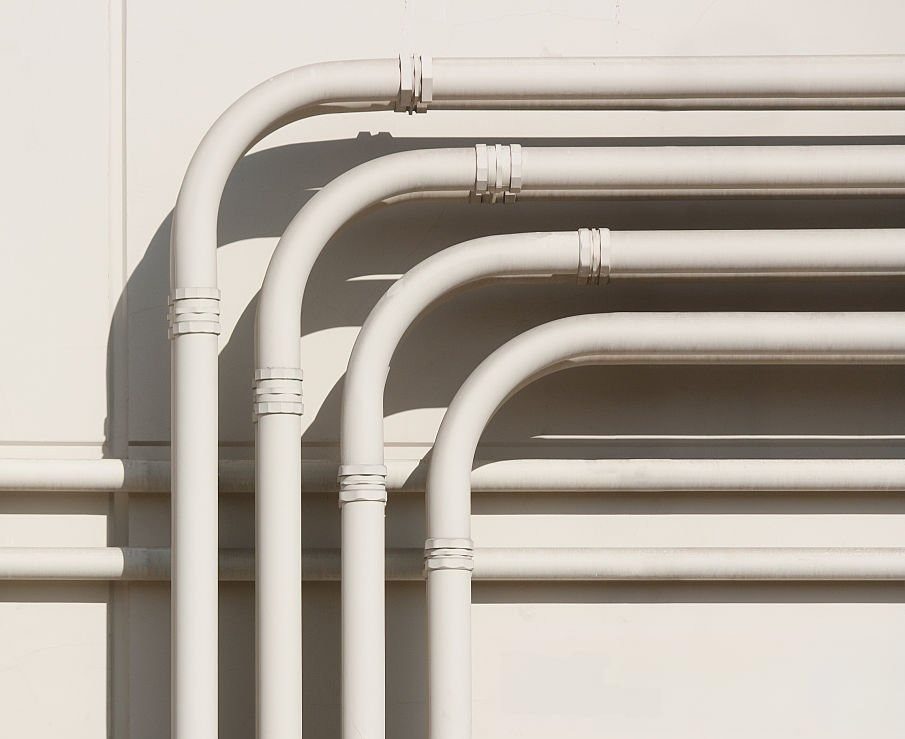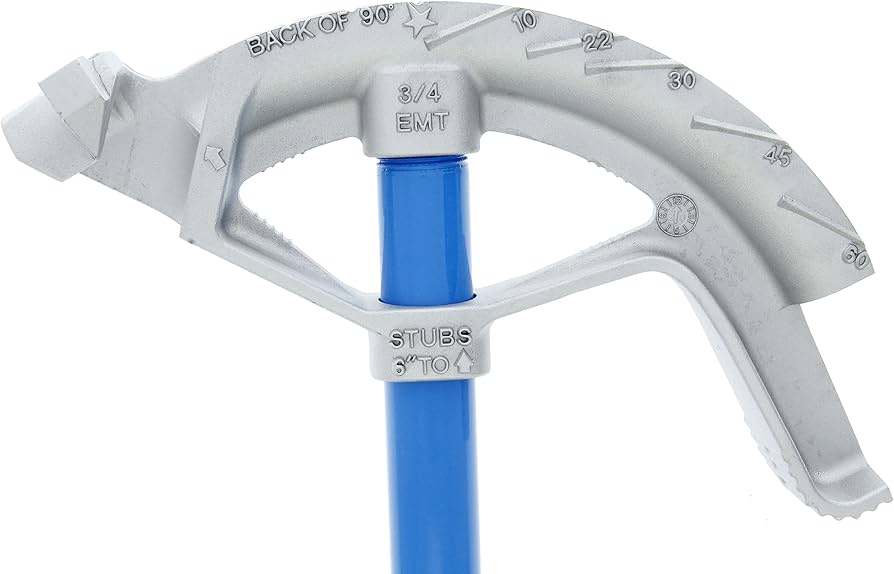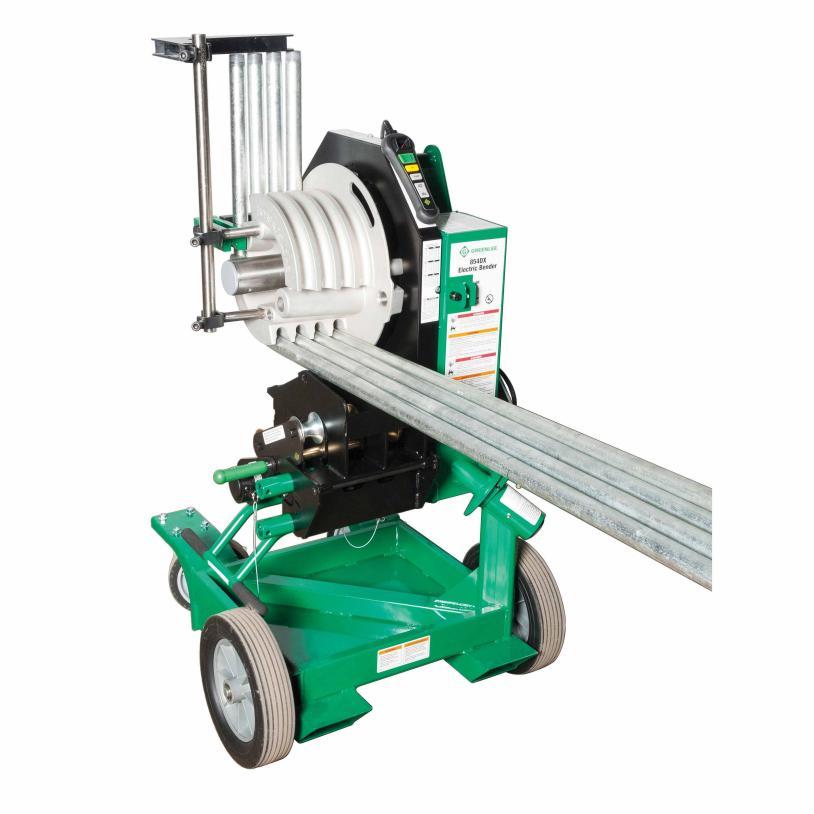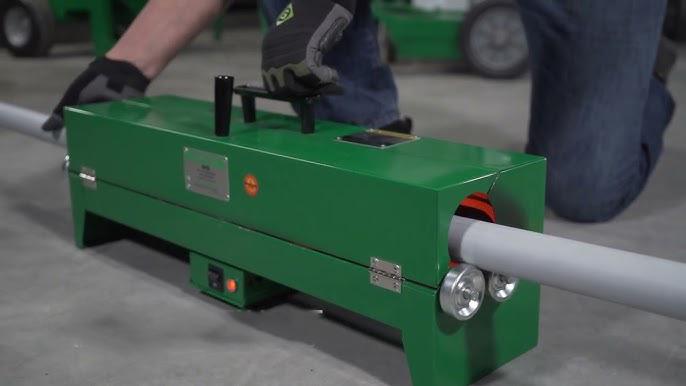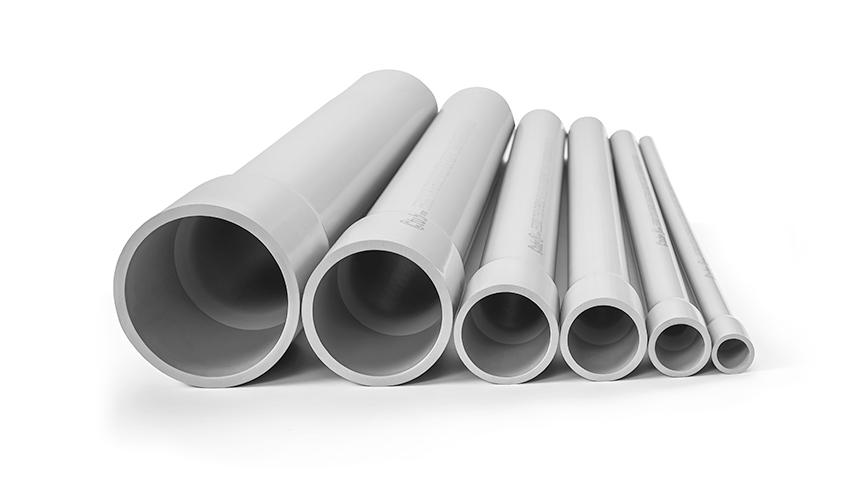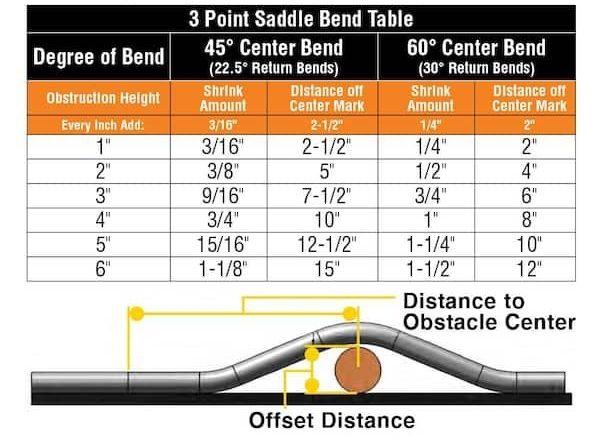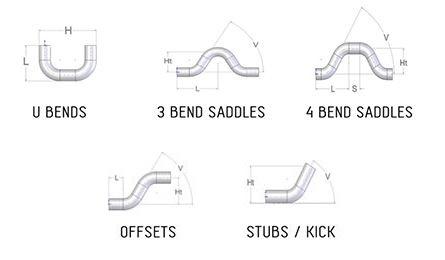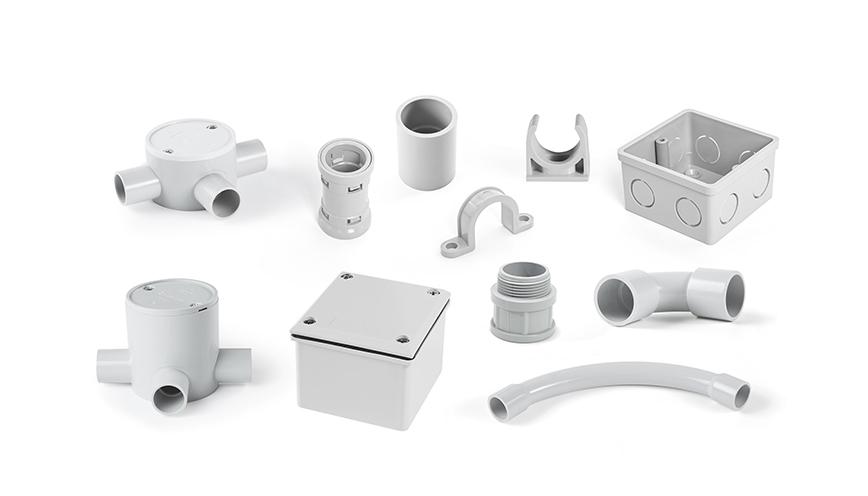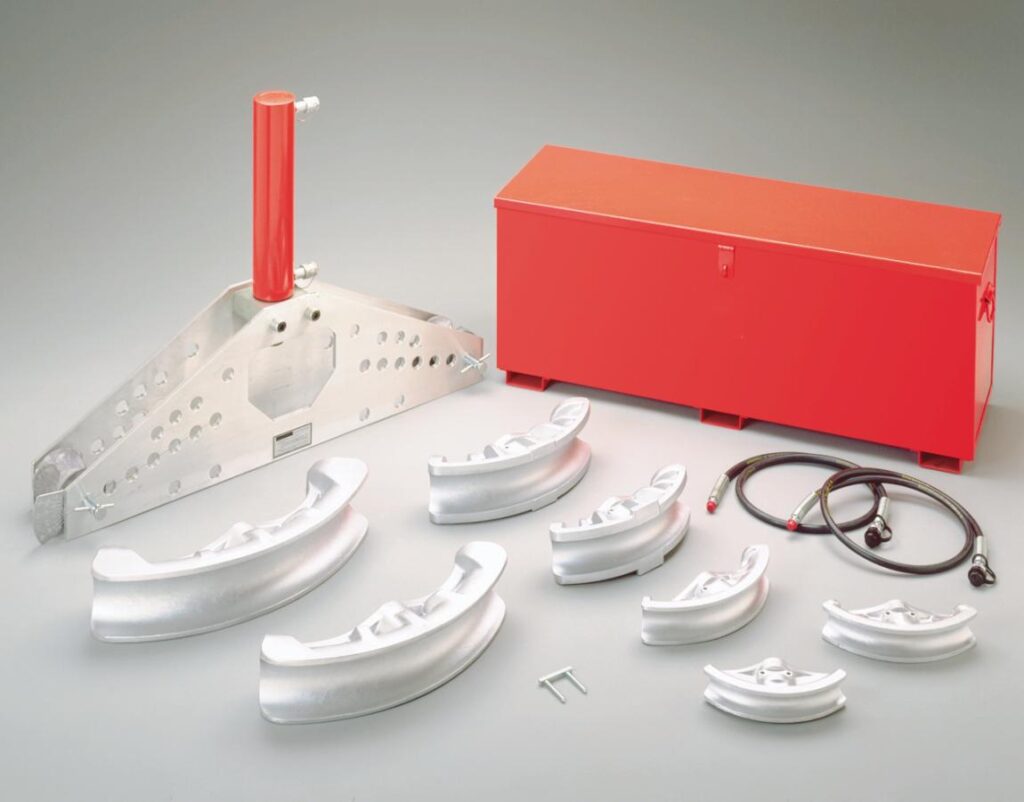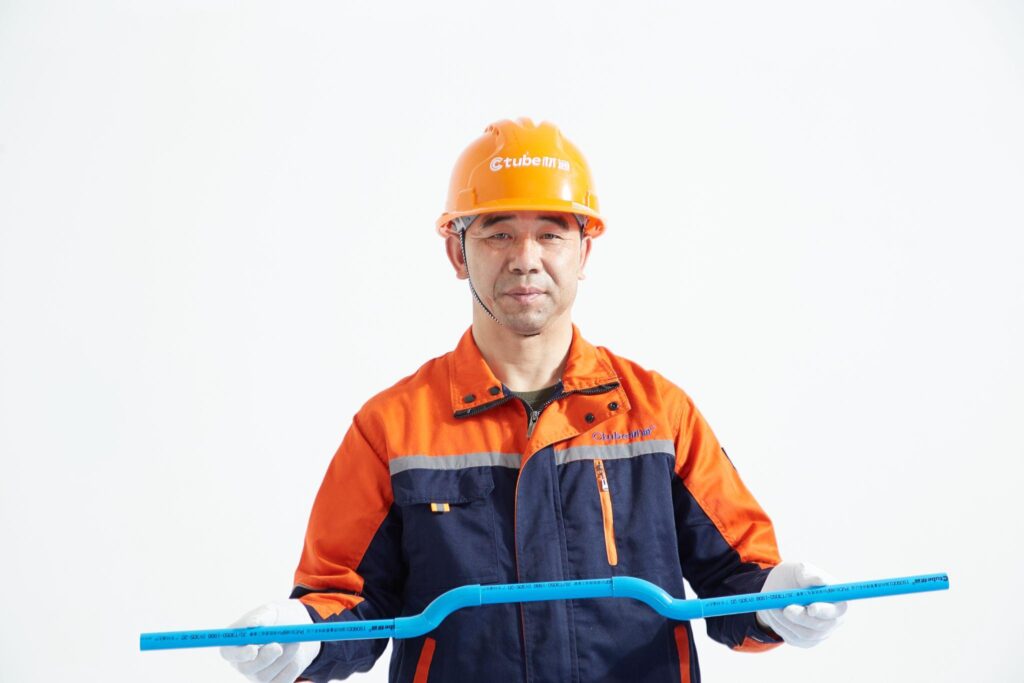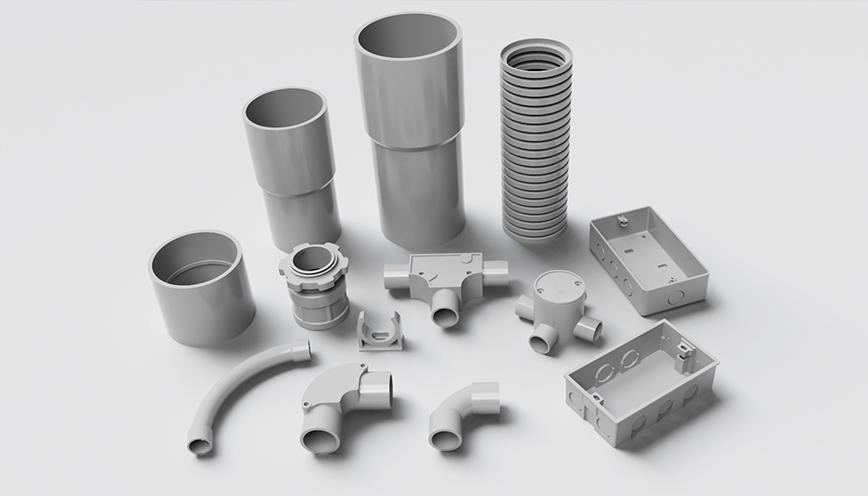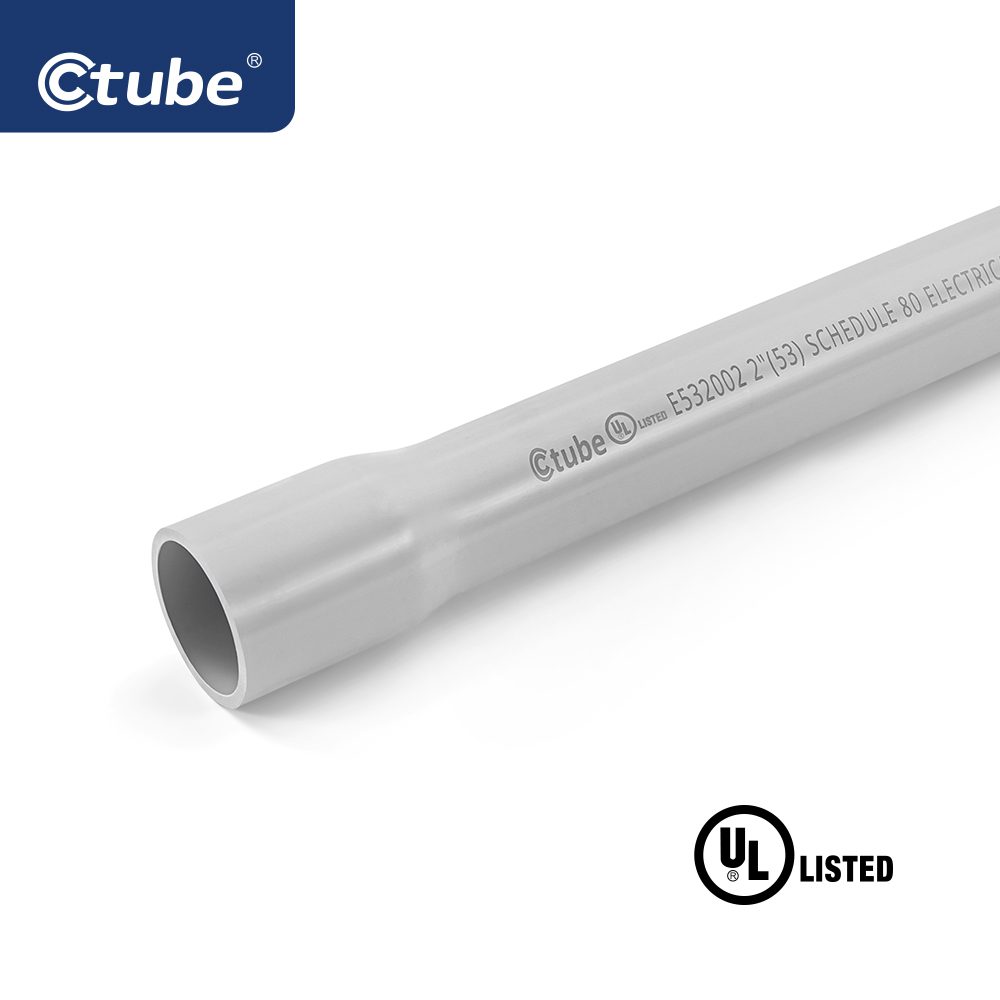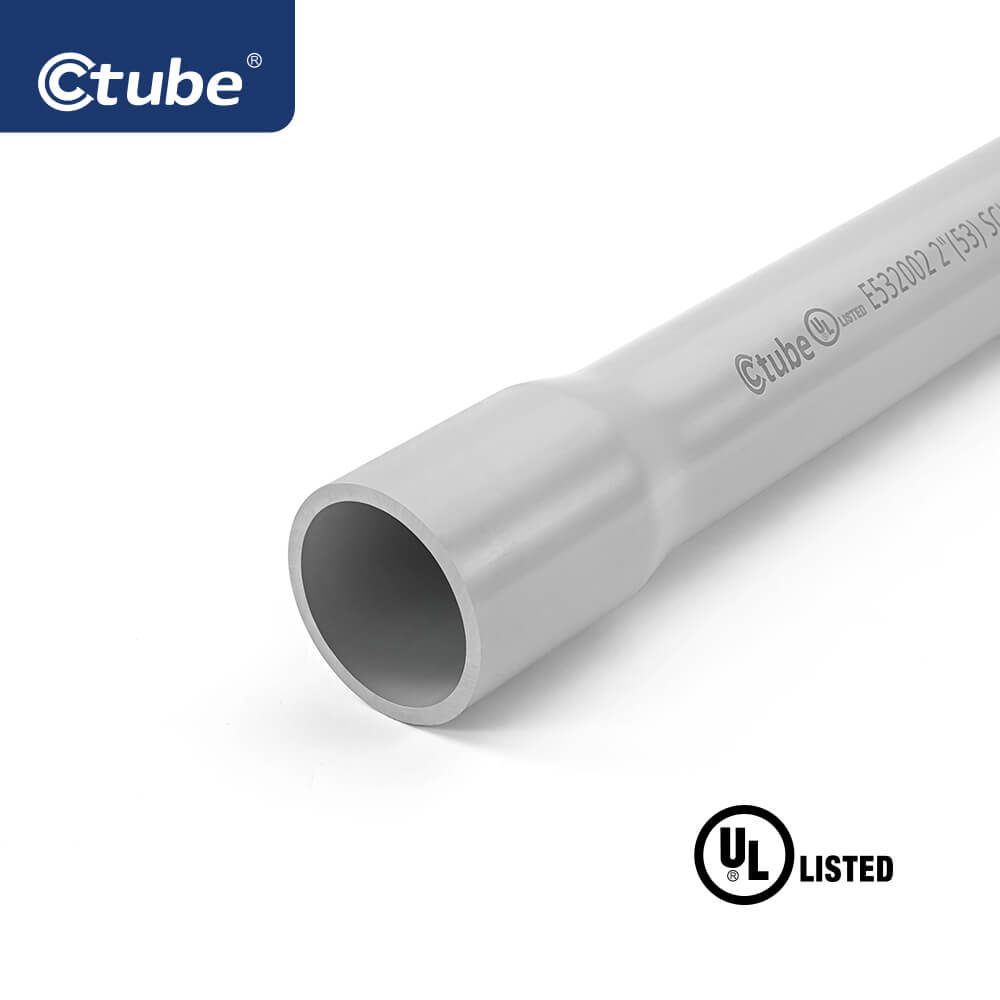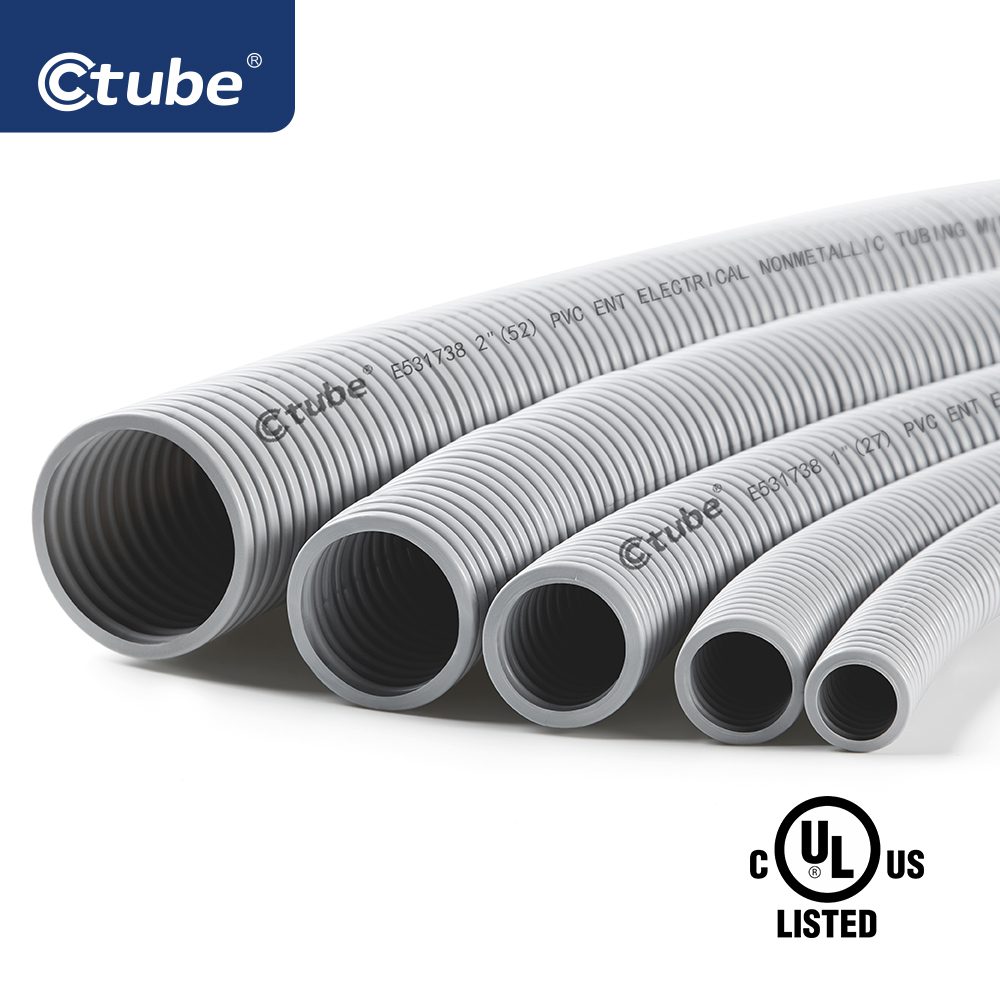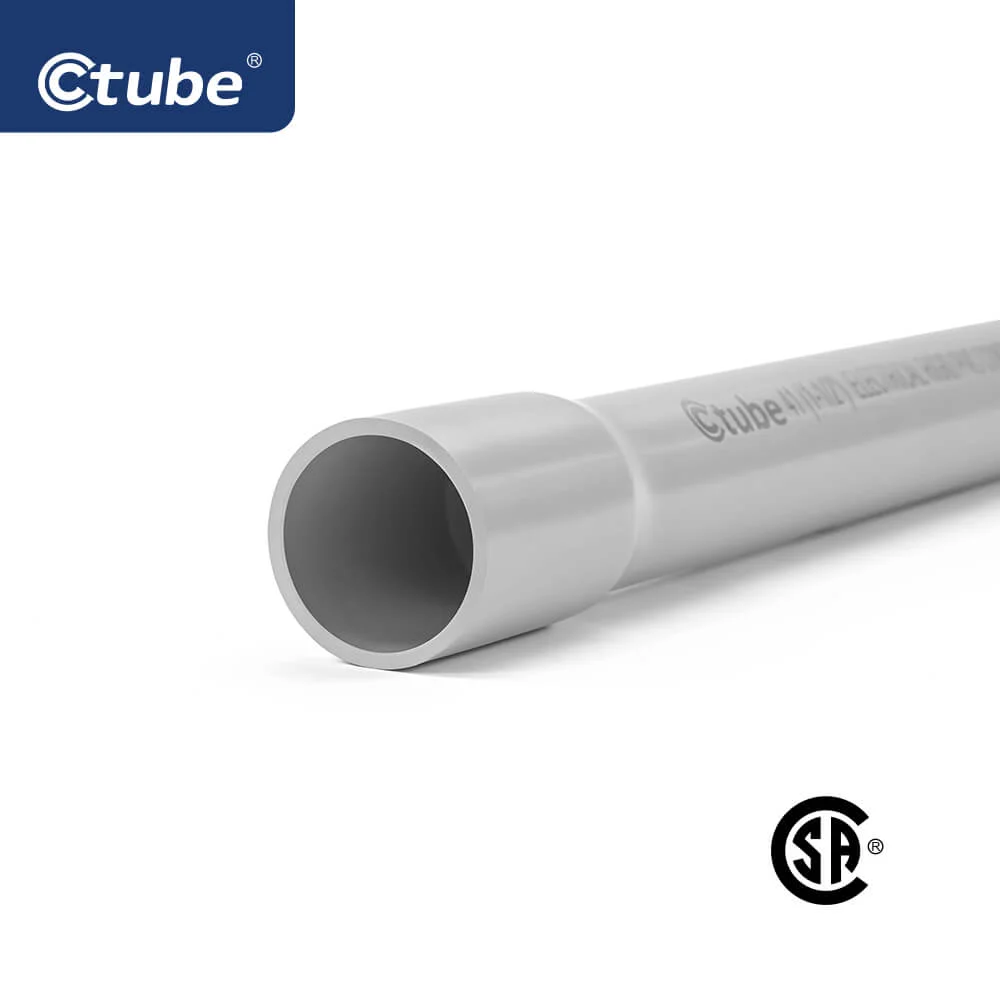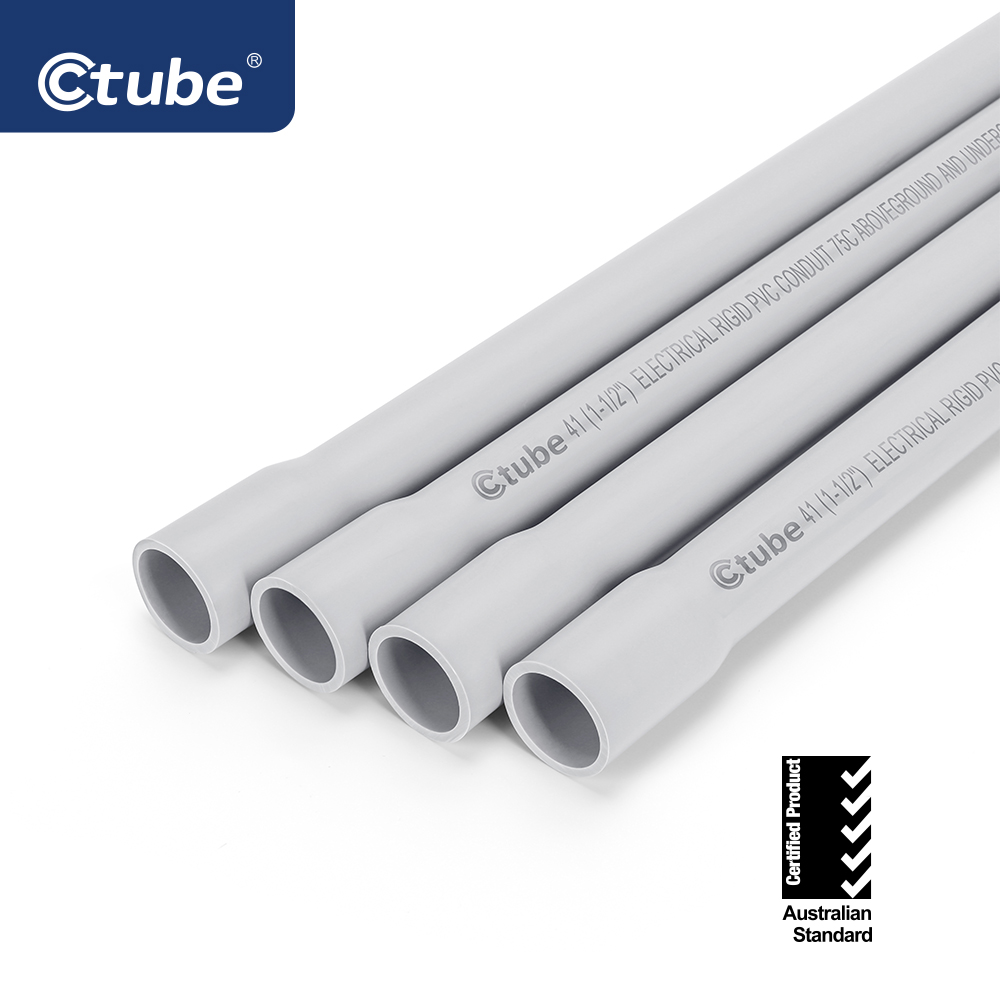Table des matières
Basculer1. Introduction
Le cintrage des conduits est le processus de mise en forme des tubes de conduit pour acheminer efficacement les câbles électriques à travers la configuration d'un bâtiment, en tenant compte des murs, des plafonds, des angles et autres éléments structurels.
Des conduits correctement cintrés sont non seulement essentiels pour garantir la sécurité des systèmes électriques, mais jouent également un rôle important pour que les projets restent visuellement propres et accessibles pour les opérations de maintenance ou les mises à niveau futures.
L'importance d'un cintrage précis des conduits va au-delà de la simple protection : elle a également un impact sur l'efficacité, l'esthétique et la sécurité du projet.
En créant des courbes douces et précises, les électriciens peuvent minimiser les contraintes inutiles sur les fils, prévenir les dommages causés par des arêtes vives ou des angles incorrects et garantir que les chemins de câblage sont conformes aux codes du bâtiment.
Des coudes bien réalisés facilitent le passage des câbles dans les conduits et réduisent les risques potentiels liés aux câbles lâches ou exposés.
Il est toutefois important de plier le conduit conformément aux réglementations en vigueur. Le NEC fixe des limites quant au nombre total d'angles de pliage autorisés et, à titre de référence, le tableau suivant décrit les exigences spécifiques pour différents types de conduits.
D'une manière générale, le National Electrical Code (NEC) mentionne qu'il ne doit pas y avoir plus de l'équivalent de quatre coudes d'un quart (360 degrés au total) entre les points de traction, par exemple, les corps de conduit et les boîtes.
| TYPE DE CONDUIT | NEC |
|---|---|
| Conduit métallique intermédiaire (IMC) | 342.26 |
| Conduit métallique rigide (RMC) | 344.26 |
| Conduit métallique flexible (FMC) | 348.26 |
| Conduit métallique flexible étanche aux liquides (LFMC) | 350.26 |
| Conduit rigide en chlorure de polyvinyle (PVC) | 352.26 |
| Polyéthylène haute densité (PEHD) | 353.26 |
| Conduit souterrain non métallique avec conducteurs (NUCC) | 354.26 |
| Conduit en résine thermodurcissable renforcée (RTRC) | 355.26 |
| Conduit flexible non métallique étanche aux liquides (LFNC) | 356.26 |
| Tubes électriques métalliques (EMT) | 358.26 |
| Tubes électriques non métalliques (ENT) | 362.26 |
2. Types de conduits électriques flexibles et leurs caractéristiques
Il existe de nombreux types de matériaux pour conduits, tels que les tubes EMT, PVC et les tubes métalliques rigides, et chacun se comporte différemment lorsqu'il est cintré. Les outils utilisés pour le cintrage — qu'ils soient manuels, électriques ou hydrauliques — doivent être adaptés au type et à la taille du conduit afin d'éviter tout dommage et d'obtenir un résultat précis.
| Type de conduit | Détails |
|---|---|
| Tubes électriques métalliques (EMT) | Léger et facile à cintrer, le conduit EMT est couramment utilisé en intérieur, notamment dans les bâtiments commerciaux et industriels. Sa structure métallique à paroi mince offre une protection adéquate en environnement contrôlé et peut être cintrée manuellement ou à l'aide de cintreuses électriques. |
| Conduit rigide en PVC | Fabriqué en polychlorure de vinyle (PVC), ce type de conduit est résistant à la corrosion et idéal pour les environnements extérieurs ou humides. Le conduit en PVC peut être chauffé et façonné pour s'adapter à des courbes spécifiques, ce qui le rend polyvalent pour les installations intérieures et extérieures, notamment lorsque la résistance à l'humidité est importante. |
| Conduit métallique rigide (RMC) | Le conduit RMC, grâce à ses parois épaisses, est robuste et adapté aux environnements soumis à de fortes contraintes ou exposés, tels que les installations industrielles ou extérieures. Il offre une protection renforcée, mais nécessite des cintreuses plus puissantes, comme les modèles hydrauliques ou électriques, pour réaliser des courbes précises. |
| Conduit métallique intermédiaire (IMC) | L'IMC est légèrement plus léger que le RMC, tout en restant résistant et adapté à une utilisation extérieure ou commerciale. Bien qu'il soit parfois possible de le cintrer à l'aide de cintreuses manuelles à fort effet de levier pour les tuyaux de petit diamètre, l'utilisation de cintreuses électriques ou hydrauliques est généralement recommandée pour un résultat plus net, notamment pour les grands diamètres. |
| Résumé | Comprendre les caractéristiques des différents types de conduits et sélectionner la technique de pliage appropriée pour chacun garantit à la fois durabilité et sécurité dans toute configuration électrique. |
3. Types de cintreuses de conduits et leurs cas d'utilisation
Choisir la cintreuse de conduits adaptée est essentiel pour garantir précision, efficacité et sécurité. Chaque type de conduit, de par ses propriétés matérielles et son épaisseur spécifiques, exige une méthode de cintrage particulière.
Par exemple, la flexibilité des conduits EMT permet de les cintrer facilement à l'aide de cintreuses manuelles ou électriques, tandis que la rigidité des conduits RMC exige la force supplémentaire de cintreuses hydrauliques ou électriques pour obtenir des angles précis sans endommager le conduit. De plus, les conduits en PVC, cassants à froid, doivent être chauffés avant d'être cintrés afin d'éviter les fissures.
Nous ferons une introduction détaillée des différents types de cintreuses de conduits et ferons une comparaison dans ce qui suit.
| Type de cintreuse | Description | Avantages | Inconvénients |
|---|---|---|---|
| cintreuses manuelles | Outils manuels généralement en fer ou en aluminium, utilisés pour les conduits de petit diamètre. | – Portable et facile à utiliser – Rentable pour les petits travaux – Convient aux conduits EMT de ½, ¾ et 1 pouce |
– Nécessite une force manuelle importante pour les grandes tailles – Limité aux conduits de plus petite taille |
| Cintreuses mécaniques | Fonctionnement manuel, mais nécessite moins de force que les cintreuses manuelles ; convient aux grandes dimensions. | – Plus efficaces que les cintreuses manuelles – Meilleur pour les courbes uniformes – Rapide et efficace |
– Plus lourds et moins portables que les cintreuses manuelles |
| cintreuses électriques | Fonctionnant à l'électricité, conçue pour le pliage en grande série. | – Paramètres programmables pour les virages répétitifs – Convient à différents types de conduits jusqu'à 2 pouces – Permet de réaliser des courbes régulières et uniformes sans endommager le conduit. |
– Coût plus élevé – Nécessite une source d'alimentation électrique – Encombrant et nécessite un espace d'installation |
| Cintreuses hydrauliques | Utilisez la pression hydraulique pour cintrer les conduits de plus grand diamètre (généralement 2 pouces et plus). | – Idéal pour les grands projets | – Plus cher en raison des composants hydrauliques |
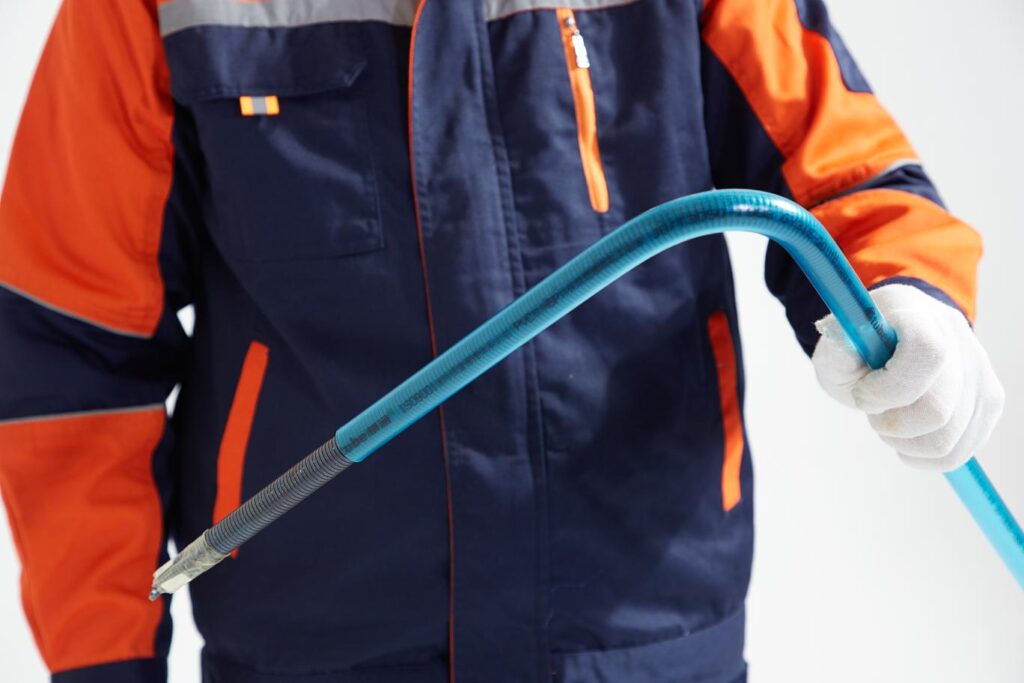
Les ressorts de cintrage sont un outil utile conçu spécifiquement pour faciliter le cintrage des conduits flexibles non métalliques comme les conduits en PVC.
En insérant un ressort de flexion à l'intérieur ou autour du conduit, on renforce les parois de celui-ci pendant le processus de cintrage, l'empêchant ainsi de s'affaisser ou de se plier.
Ceci est particulièrement utile lors de la manipulation de conduits en PVC de petit diamètre, qui peuvent se déformer lorsqu'ils sont pliés manuellement.
Meilleures applications : Les ressorts de cintrage sont couramment utilisés pour les conduits flexibles légers dans les installations électriques résidentielles ou commerciales légères. Ils sont idéaux pour les projets nécessitant des courbes douces et progressives, ne nécessitant ni machines lourdes ni outils de haute précision.
Avantages : Les ressorts de cintrage sont légers, abordables et faciles à utiliser. Ils offrent un soutien supplémentaire pour réaliser des cintres réguliers sans endommager le conduit, ce qui les rend pratiques pour des ajustements rapides sur le terrain et pour les petites installations.
Inconvénients : Bien qu'efficaces pour les matériaux légers, les ressorts de flexion présentent des limites. Ils conviennent généralement uniquement aux conduits non métalliques de petit diamètre, car ils peuvent ne pas offrir un soutien suffisant pour les matériaux plus épais ou rigides comme les conduits métalliques.
De plus, le pliage des ressorts nécessite un certain effort manuel, ce qui peut ne pas être pratique pour les projets de grande envergure ou lorsque des angles précis sont essentiels.
● Cintreuses manuelles pour conduits
Les cintreuses manuelles de conduits sont des outils traditionnels à commande manuelle qui permettent aux électriciens de cintrer les conduits en utilisant leur propre force physique.
Ils comprennent généralement un levier et une matrice de rayon pour guider le conduit dans des coudes simples, tels que des angles de 90 degrés ou de légères courbes.
Les cintreuses manuelles sont légères, portables et idéales pour les projets ne nécessitant que quelques pliages.
Meilleures applications : Les cintreuses manuelles sont bien adaptées au cintrage de conduits plus petits et plus légers, tels que les tubes métalliques électriques (EMT) et les conduits métalliques intermédiaires (IMC) de petit diamètre.
Ces matériaux sont fréquemment utilisés dans les environnements résidentiels et commerciaux légers où le schéma électrique ne nécessite que des coudes simples.
Avantages : Ces cintreuses sont abordables, faciles à transporter et ne nécessitent aucune alimentation électrique, ce qui les rend idéales pour les petits projets. Elles sont simples d'utilisation et efficaces pour les situations où une grande précision de pliage n'est pas nécessaire.
Inconvénients : Leur utilisation exige un effort physique, qui peut devenir fatigant avec des conduits de grand diamètre ou d'épaisseur importante. Les cintreuses manuelles peuvent ne pas convenir aux conduits métalliques rigides (RMC) ni aux autres conduits à parois épaisses nécessitant une force de cintrage plus importante.
● Cintreuses mécaniques de conduits
Les cintreuses mécaniques utilisent une assistance mécanique, comme un mécanisme à cliquet ou d'autres fonctions de levier, pour augmenter la force appliquée, ce qui les rend efficaces pour cintrer des conduits plus épais ou de plus grand diamètre. Elles intègrent souvent des guides intégrés et des indicateurs d'angle pour faciliter la réalisation de coudes précis et conviennent aux applications plus exigeantes.
Meilleures applications : Les cintreuses mécaniques sont couramment utilisées pour cintrer des conduits de grand diamètre ou des matériaux robustes, tels que les conduits métalliques rigides (RMC) ou les conduits métalliques intermédiaires (IMC) de grand diamètre. Elles sont particulièrement utiles dans les environnements commerciaux ou industriels nécessitant des configurations de cintrage complexes.
Avantages : Elles nécessitent moins d'effort physique que les cintreuses manuelles et offrent un meilleur contrôle et une plus grande précision. Les cintreuses mécaniques sont mieux adaptées aux situations où la répétabilité et la précision sont essentielles, notamment dans les installations électriques complexes ou critiques.
Inconvénients : Les cintreuses mécaniques sont généralement plus chères, plus encombrantes et nécessitent un temps de préparation plus long que les cintreuses manuelles. De plus, elles peuvent s'avérer moins pratiques pour réaliser rapidement des cintres simples dans des conduits légers.
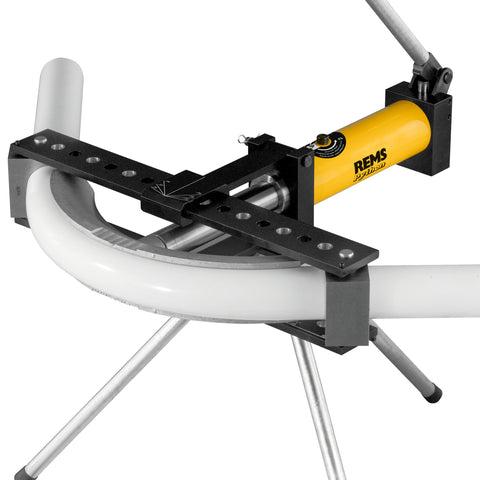
4. Comment choisir la cintreuse adaptée aux différents diamètres et matériaux de conduits
| Dimension du conduit | Type de conduit | Fermoir recommandé | Notes |
|---|---|---|---|
| ½" à 1" | Technicien ambulancier paramédical, IMC, RMC | cintreuse manuelle | Portable ; convient aux tâches légères |
| 1″ à 2″ | Technicien ambulancier paramédical, IMC, RMC | Cintreuse mécanique ou électrique | Meilleur effet de levier ; options programmables disponibles |
| 2½" à 5" | RMC | Cintreuse hydraulique | Nécessaire pour les grandes tailles, courbures régulières ; |
| PVC | PVC | Cintreuse chauffante spécialisée | Assouplit le matériau avant de le plier |
Tenez compte de la taille et du matériau du conduit.
● Petits conduits (1/2 – 1 pouce)
Les conduits de petit diamètre, tels que ceux dont le diamètre est compris entre 1/2 pouce et 1 pouce, sont généralement légers et plus faciles à manipuler.
Pour ces conduits, une cintreuse manuelle est souvent suffisante, car leur cintrage ne nécessite pas une force excessive. Portables, abordables et faciles à utiliser, les cintreuses manuelles sont idéales pour cintrer les tubes métalliques électriques (EMT) et les conduits métalliques intermédiaires (IMC) de petit diamètre, couramment utilisés dans les bâtiments résidentiels et les petits commerces.
L'utilisation d'une cintreuse manuelle pour ces petites dimensions permet aux électriciens de contrôler précisément le cintrage et de créer des angles réguliers et précis.
● Conduits de taille moyenne (1 à 2 pouces)
Les conduits de 2,5 à 5 cm de diamètre sont plus lourds et nécessitent plus d'effort pour être cintrés que les conduits de plus petit diamètre. Bien qu'une cintreuse manuelle puisse techniquement convenir à certaines de ces dimensions, les cintreuses électriques sont souvent préférables.
Les cintreuses électriques fournissent la puissance supplémentaire nécessaire pour les conduits de taille moyenne, facilitant et accélérant le cintrage, notamment pour les coudes multiples. Elles offrent précision et rapidité, atouts précieux pour les projets d'envergure, tels que les installations commerciales, où le temps et la précision sont essentiels. Compatibles avec les conduits EMT, IMC et RMC (conduits métalliques rigides) de petite taille, les cintreuses électriques constituent une solution pratique pour les applications de moyenne puissance.
● Grands conduits (2 pouces et plus)
Les conduits de grand diamètre, généralement de 2 pouces ou plus, sont extrêmement rigides et nécessitent une force importante pour être pliés sans endommager le matériau.
Les cintreuses hydrauliques sont la solution idéale pour ces conduits de grand diamètre, car elles utilisent un fluide sous pression pour appliquer une force élevée et constante, garantissant ainsi des cintres précis et réguliers. Elles sont couramment utilisées dans les projets industriels et commerciaux d'envergure où des conduits en béton précontraint ou autres matériaux à parois épaisses doivent être cintrés selon des angles spécifiques.
Ces cintreuses sont suffisamment puissantes pour gérer les tâches les plus exigeantes, bien qu'elles soient généralement stationnaires et installées dans des ateliers ou à des emplacements fixes sur les chantiers.
| Facteur | cintreuses manuelles | Cintreuses mécaniques | cintreuses électriques | Cintreuses hydrauliques |
|---|---|---|---|---|
| Exigence de force | Nécessite un effort manuel important, surtout pour les conduits de grande taille. | Réduit l'effort par rapport aux cintreuses manuelles ; convient aux tailles moyennes. | Réduit l'effort manuel ; plus facile à utiliser pour les grandes tailles. | Élimine totalement l'effort manuel ; utilise des pompes hydrauliques pour le pliage. |
| Portabilité | Très portable ; idéal pour les petits travaux ou les espaces restreints. | Moins portables que les cintreuses manuelles ; néanmoins maniables sur les chantiers. | Le moins portable ; encombrant et nécessite une installation et une alimentation électrique ; peut nécessiter de l'espace. | Moins portable en raison de sa taille et de sa source d'alimentation. |
| Versatilité | Convient à différents types de conduits (jusqu'à 2 pouces). | Limité aux petites tailles, mais peut être utilisé sur des conduits rigides si nécessaire. | Compatible avec différents types et tailles de conduits grâce à des fonctionnalités programmables. | Conçue spécifiquement pour les conduits de plus grand diamètre ; moins polyvalente que les cintreuses électriques. |
| Qualité de pliage | Peut entraîner des courbures irrégulières en cas de mauvaise utilisation ; requiert une certaine habileté. | Convient aux tailles moyennes ; polyvalent pour diverses courbures. | Offre une précision optimale grâce à ses paramètres programmables ; des résultats constants. | Permet d'obtenir des pliages de la plus haute qualité sans déformation ; très régulier. |
| Coût | L'option la plus abordable ; accessible aux bricoleurs et aux petits projets. | Coût modéré ; plus cher que les cintreuses manuelles, mais offre de meilleures performances. | Prix plus élevé en raison des fonctionnalités et capacités avancées. | Coût le plus élevé en raison des composants et des capacités hydrauliques. |
Considérations spécifiques au projet
● Échelle du projet
L'ampleur du projet a un impact significatif sur le type de cintreuse de conduits nécessaire. Pour les petits projets résidentiels, les cintreuses manuelles sont souvent suffisantes en raison des dimensions plus petites des conduits (généralement de 1/2" à 1") et des charges de travail plus légères. Ces projets nécessitent généralement moins de coudes, ce qui rend une cintreuse manuelle à la fois pratique et économique.
En revanche, les grands projets industriels ou commerciaux impliquent des conduits de plus grande taille et des volumes de cintrage plus importants, pour lesquels les cintreuses électriques ou hydrauliques sont mieux adaptées.
Les projets industriels impliquent souvent des matériaux plus épais et des conduits de plus grand diamètre, ce qui nécessite la puissance et la durabilité supplémentaires offertes par les cintreuses hydrauliques ou électriques.
Pour ces applications à grande échelle, choisir la bonne cintreuse permet de gagner du temps, de réduire les efforts physiques et de garantir des résultats constants lors de pliages répétitifs.
● Budget et espace de travail disponible
Le budget du projet et l'espace de travail disponible peuvent également orienter le choix de la cintreuse.
Les cintreuses manuelles sont l'option la plus abordable et sont portables, ce qui les rend idéales pour les petits budgets ou les projets où l'espace est limité.
Ces cintreuses se rangent facilement et s'utilisent dans des espaces restreints sans nécessiter de source d'alimentation ni d'installations spéciales.
Toutefois, si le budget du projet le permet, les cintreuses électriques offrent un bon compromis entre prix abordable et performances accrues, alliant rapidité et précision pour les applications de moyenne intensité.
Pour les projets d'envergure, bénéficiant de budgets plus importants et d'un espace de travail dédié, les cintreuses hydrauliques représentent un investissement judicieux grâce à leur puissance et leur efficacité élevées, notamment pour les conduits de grand diamètre. Cependant, elles nécessitent généralement plus d'espace d'installation et sont moins mobiles ; elles sont donc plus adaptées aux grands environnements de travail où elles peuvent être utilisées comme équipements fixes.
● Niveau de précision requis
Le niveau de précision requis pour le projet est également un facteur déterminant. Si l'esthétique ou la réalisation d'angles serrés sont importantes, comme dans le cas d'installations visibles ou de projets architecturaux, les cintreuses électriques et hydrauliques permettent d'obtenir des cintres précis et réguliers, réduisant ainsi les risques de retouches.
Ces cintreuses offrent un contrôle plus précis et réduisent les erreurs, ce qui les rend idéales pour les projets où la précision est essentielle.
Pour les projets où l'apparence et la précision sont moins importantes, comme les conduits de services publics dissimulés dans les murs ou souterrains, les cintreuses manuelles peuvent suffire.
Cependant, pour les installations avec des conduits visibles, notamment dans les environnements commerciaux où l'esthétique et l'uniformité comptent, investir dans une cintreuse qui offre précision et régularité vaut souvent le coût supplémentaire.
4. Techniques de cintrage précis des conduits

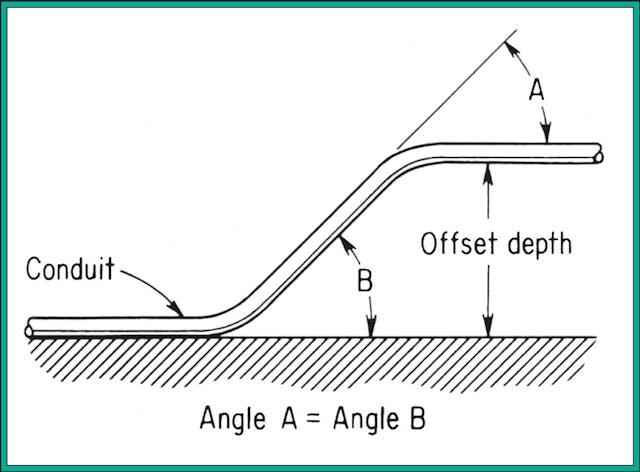


Il est essentiel de marquer le conduit avec précision. Ces marques servent de repères pour que les coudes se produisent aux endroits exacts nécessaires à la disposition du conduit. Commencez par identifier l'emplacement de chaque coude, en mesurant à partir d'un point fixe comme l'extrémité du conduit.
Un mètre ruban est un outil simple pour mesurer précisément la longueur des conduits. Utilisez-le pour identifier et vérifier les points de courbure. Cette étape est cruciale pour les décalages et les raccords en selle qui nécessitent plusieurs coudes.
Le gain correspond à la longueur de conduit absorbée par le coude. Il s'agit de la longueur supplémentaire résultant du coude, principalement due à l'étirement du bord extérieur. Les fabricants fournissent souvent des tableaux de gain pour faciliter le réglage.
Pour un coude à 90° avec un retrait de 5 pouces sur un conduit EMT de 3/4″, afin d'obtenir un tronçon de 20 pouces, marquez à 25 pouces (20 + 5). Cela tient compte de la perte de longueur de conduit due au coude.
La plupart des cintreuses de conduits sont équipées d'indicateurs d'angle (10°, 30°, 45°, 90°). Ces repères permettent de réaliser des angles constants sur plusieurs coudes.
Ces outils offrent un second niveau de précision. Les appareils de mesure numériques sont particulièrement utiles pour confirmer les pliages sur mesure ou garantir la précision des angles de pliage.
Les décalages utilisent deux coudes identiques. Multipliez la hauteur de pente requise par le coefficient multiplicateur (2,0 pour 30°, 2,6 pour 22,5°, 1,4 pour 45°) pour obtenir l'espacement. Par exemple, une hauteur de 76 mm (3 pouces) avec des coudes à 30° nécessite un espacement de 152 mm (6 pouces).
Selle à trois points : Mesurer la hauteur de l'obstacle. Courbure centrale à 45°, deux courbures extérieures à 22,5°.Selle à quatre points : Pour les obstacles plus importants, utilisez quatre coudes — 22,5°, 45°, 45°, 22,5° — pour maintenir le conduit à niveau tout en dégageant l'obstruction.
5. Outils et accessoires pour un cintrage précis des conduits
Disposer des outils et accessoires adéquats permet de rendre le cintrage des conduits plus efficace et plus précis.
Voici quelques outils essentiels à prendre en compte pour garantir la précision et la cohérence de vos projets de cintrage de conduits :
Calculateur de cintrage de conduits
Un calculateur de cintrage de conduits est un outil précieux pour déterminer rapidement les longueurs et les angles corrects pour différents types de coudes, tels que les décalages, les selles et les coudes dos à dos.
Les calculatrices peuvent être portables ou sous forme d'application et proposent souvent des fonctions prédéfinies pour les calculs de cintrage courants, ce qui les rend particulièrement pratiques pour réaliser plusieurs coudes sur une même conduite. En saisissant les mesures clés, vous obtenez des indications immédiates sur les points de marquage et de cintrage, réduisant ainsi les risques d'erreurs.
rapporteur d'angle
Un rapporteur d'angle permet de garantir des angles précis, notamment avec les cintreuses manuelles où la précision peut varier. Les rapporteurs d'angle numériques sont particulièrement utiles pour réaliser des pliages précis, car ils affichent la mesure de l'angle en temps réel, assurant ainsi un résultat optimal.
Pour les configurations de pliage complexes ou les angles personnalisés, un rapporteur d'angles peut s'avérer précieux, vous permettant de vérifier les pliages avant et pendant l'installation afin de confirmer leur conformité avec vos spécifications.
Niveau ou carré
Un niveau (à bulle ou numérique) ou une équerre est indispensable pour garantir la rectitude et l'alignement de la gaine, notamment sur les tracés horizontaux. Son utilisation permet d'éviter que la gaine ne s'incline accidentellement lors de la pose, ce qui est essentiel pour son bon fonctionnement et l'esthétique de l'installation.
Les équerres sont particulièrement utiles pour cintrer plusieurs sections qui doivent se raccorder parfaitement, car elles permettent de vérifier que les coudes conservent un alignement correct par rapport aux autres sections de conduit.
Gabarits pour plusieurs coudes
Lorsqu'un projet nécessite de nombreux coudes identiques, comme dans le cas d'installations à grande échelle, la création d'un gabarit pour ces coudes permet de gagner du temps et de maintenir l'uniformité.
Les gabarits sont des guides fabriqués à partir d'un conduit initial correctement cintré et peuvent être placés le long d'autres sections pour garantir qu'elles correspondent aux angles et aux longueurs d'origine.
Ceci est particulièrement utile pour les grands projets où de petites variations peuvent s'accumuler et affecter la mise en page finale.
Les gabarits sont des outils simples mais très efficaces pour réduire les variations entre plusieurs conduits, garantissant un aspect cohérent et professionnel ainsi qu'un alignement précis dans la disposition générale.
Connecteurs de conduits Aide pour prendre un virage
En plus de plier le conduit lui-même pour obtenir un virage, l'utilisation de raccords de conduit peut fournir une solution plus efficace et moins dommageable. Ces raccords sont conçus spécifiquement pour réaliser des virages dans le système de conduits tout en minimisant le risque d'endommager le conduit ou le câblage à l'intérieur. En utilisant des raccords, les installateurs peuvent réaliser des virages en douceur et contrôlés sans solliciter le matériau du conduit, ce qui est particulièrement bénéfique pour protéger le câblage sensible.
- Connecteurs coudés : Conçus pour réaliser des virages à 90 degrés en douceur dans les systèmes de conduits, ces raccords sont disponibles en différents angles (généralement 90° et 45°) et sont parfaits pour guider les conduits autour des angles et des obstacles.
- Virages en Sweeps : Pour les conduits de plus grande taille, un balayage fournit une courbe plus progressive par rapport à un coude standard, assurant une transition plus douce et réduisant la contrainte sur le conduit.
- Connecteurs en T et en croix : Bien qu'ils ne soient pas strictement utilisés pour les virages, ces connecteurs permettent de multiples cheminements pour les conduits, y compris les virages.
- Options de conduits flexibles : Utilisés dans les virages serrés ou complexes où les connecteurs rigides ne sont pas pratiques, notamment dans les zones de machines ou de pièces mobiles.
6. Conclusion
Dans cet article, nous avons exploré les différents types de cintreuses de conduits (manuelles, électriques, hydrauliques et spéciales), chacune adaptée à des tailles et matériaux de conduits spécifiques. Nous avons également abordé les techniques de cintrage essentielles, telles que la mesure précise, la compréhension du gain et de la reprise, et l'utilisation des bons outils pour des cintrages cohérents et précis.
Ctube est un fabricant et fournisseur de conduits et de raccords en PVC de haute qualité, spécialisé dans la fourniture de solutions innovantes, durables et rentables pour les installations électriques. Ctube propose une large gamme d'options de conduits, notamment Conduite de l'annexe 40, Conduite de l'annexe 80, et des conduits spécialisés tels que DB120 et Type EB, conçu pour les applications résidentielles et industrielles.
Chez Ctube, nous comprenons l'importance de la fiabilité, de la sécurité et de la performance des systèmes de conduits électriques. Nos produits sont rigoureusement testés pour garantir qu'ils répondent à des normes strictes, notamment en matière de résistance à la pression, aux chocs et aux températures extrêmes, ainsi qu'en matière de protection contre les UV et la corrosion. Que vous travailliez sur une installation souterraine ou sur un projet en surface, Ctube fournit les conduits et les raccords appropriés pour effectuer le travail de manière efficace et sûre.
FAQ
1. Quelle est la différence entre une cintreuse de conduit et un connecteur de conduit ?
Un cintreur de conduit est un outil utilisé pour plier le conduit lui-même afin de créer des angles et des courbes pour diriger le câblage électrique. Un connecteur de conduit, d'autre part, est un raccord utilisé pour joindre deux morceaux de conduit ou changer la direction du conduit sans plier le matériau.
2. Puis-je plier un conduit en PVC sans cintreuse chauffante ?
Bien qu'il soit possible de plier manuellement les conduits en PVC sans chaleur à l'aide d'une cintreuse pour conduits en PVC, l'application de chaleur peut aider à ramollir le matériau, ce qui permet des pliages plus lisses et plus précis. Pour les pliages serrés ou complexes, il est préférable d'utiliser une cintreuse en PVC chauffée pour éviter de fissurer ou de plier le matériau.
3. Comment cintrer les conduits par temps froid ?
Le pliage des conduits par temps froid peut être difficile, en particulier pour les conduits en PVC et certains conduits métalliques.
Chauffer le conduit : pour le PVC, utilisez une source de chaleur comme un pistolet thermique pour chauffer le conduit avant de le plier. Cela rend le matériau plus flexible et réduit le risque de fissuration.
Exercez une pression lente et constante : évitez d’appliquer une force trop rapide, car cela peut entraîner une flexion inégale du conduit ou une rupture par temps froid.
Stockez les matériaux dans un endroit chaud : si possible, conservez votre conduit à l'intérieur ou dans un espace chauffé jusqu'à ce que vous soyez prêt à l'utiliser. Cela permet d'éviter que le matériau ne devienne trop cassant.

